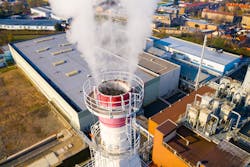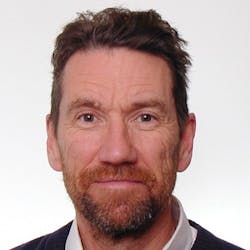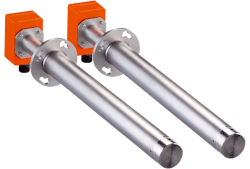Emissions standards are having a significant impact on the chemical industry, which accounts for about 5% of global CO2 emissions. The industry finds itself at the intersection of innovation and environmental responsibility. Chemical processing plants must balance the need to meet demand for new materials without increasing their emissions. Technology plays a critical role in the collection and analysis of emissions. The data allows chemical manufacturers to understand pollution sources, so they can implement corrective actions.
These technologies, including those with sensing and detection capabilities, are critical not only for regulatory purposes but for investors and the public who are demanding transparency and accountability in environmental practices.
Chemical Processing magazine recently spoke with David Inward, strategic industry manager for chemicals, petrochemicals and refineries at SICK AG, a producer of sensors and sensor solutions for industrial automation applications. Inward discussed some of the challenges chemical operations face in their efforts to reduce emissions and potential solutions.
As we've seen recently, the EPA is proposing new rules aimed at curbing emissions under the Clean Air Act. Is the chemical industry prepared for these changes?
A. Broadly speaking, I would say yes, since the chemical industry already has a long history of adapting to new regulations, improving processes and implementing abatement systems to lessen the burden in cases such as ethylene oxide. One valid example is the reduction in N2O emissions, a strong greenhouse gas generated as a byproduct of nitric acid production. If we look back over the past decade, there's been an effective cooperation between plant operators and technology suppliers, and that has resulted in N2O emissions being reduced from what were hundreds of parts per million down to well below 10 PPM from a modern nitric acid plant today.
What are some of the challenges chemical processing plants face when it comes to monitoring their emissions?
A. Well, I think continuously reporting emissions means that there is a need to install a sophisticated, often unfamiliar gas analytical technology in a chemical plant, which is probably being run with a very lean maintenance operation. And of course, the regulatory body demands high availability of the reported emissions data, let's say above 90% uptime or even 95%. So, I think that having access to high-quality service support from the emission monitoring supplier is a must. And actually, in today's world, we've also got remote diagnostics, which we can use as a very powerful tool to support conventional onsite service interventions.
Can you discuss which tools chemical plants are typically lacking when it comes to accurately measuring and analyzing emissions?
A. I would say the vast majority of emission monitoring tasks can be successfully addressed as long as the measuring task is correctly defined in the project engineering phase. Emission monitoring systems tend to be customized in their design for the specific measurement task; therefore, making major retrospective adaptations can be difficult and expensive. When you define an emission monitoring project, the scope needs to also consider all conditions during process upset. A good example might be the huge fluctuations you see, perhaps a hundredfold in SO2 emission concentrations from a sulfur recovery unit if you make that comparison between steady state and process upset conditions.
So what are some of the effective ways chemical processing plants can measure their emissions accurately?
A. I think one area of focus needs to be the sample system of the emission monitoring system because problems with sample systems account for most cases of emission monitoring analyzer downtime, and they also demand the lion's share of the maintenance support. The sample system should have no impact on the sample gas to ensure a representative measurement can occur, so simplicity of the emission monitoring sample system design is greatly desirable.
Can you talk a little bit about some of the technological advancements that enable this?
A. There is a broad range today of in-situ emission monitoring analyzers, and that is a technology without any need for sample extraction and preparation. Since, of course, they're measuring within the stack environment, there's also a hot extractive emission monitoring technology. That maintains the sample gas at a high temperature is also robust enough not to need multiple filtration steps and also avoids the need for a chiller and drainage system to remove water prior to analysis from the sample gas. The sample system design of your hot extractive analyzer only has three elements, so that fits very well with the idea of having a simple sampling design.Can you discuss some of the recent advancements related to analyzers that chemical manufacturers should know about?
A. Hot extractive infrared gas analyzers are one example. They have a powerful multi-component capability and can measure up to 12 infrared active components. As well as these optical measurements, an integrated zirconium sensor for measuring oxygen means that a single hot extractive analyzer normally fulfills all regulatory requirements. The analyzer can be applied to the broadest range of applications, but good examples of difficult applications where the hot extractive analyzer is a particularly good fit are monitoring emissions from the sulfur recovery unit of a refinery or monitoring emissions from nitric acid and sulfuric acid production. It’s also suitable for both U.S. EPA Part 60 and Part 75 emissions reporting.
What are some of the other ways organizations can ensure the quality and reliability of their emissions monitoring efforts?
A. I would say that the chances of achieving a successful emission monitoring project are maximized if there is close, transparent cooperation between the plant operator and the emission monitoring supplier, and that's valid from the inception of the project and remains valid across the whole lifetime of the emission monitoring system.
Is there anything else you wanted to add that you think is important for chemical processing operations to know about?
A. The emission limit values are going lower and lower. That makes things challenging for all of us. I think calibration also then becomes a major topic. So I think the message really is that we're all in this together – the plant operators, the technology providers and the emission monitoring suppliers. So, transparency on future regulations is really, really important, and we all must contribute.
Did you want to talk a little bit about how you enable that at SICK? How do you work with your customers on enabling some of that transparency?
A. If we are made aware of a project at an early phase, we really like to take a consultative approach because, of course, we are experienced in a broad range of applications and processes, and if we have the transparency in an early phase, that helps us to contribute our knowledge as a means to guide the project. That means that the selection of the technology is going to be the best possible fit. Ultimately, what I always say is that it's not this technology or that technology is better, but actually it's the application that really defines which technology is best implemented, and the sooner that we're engaging with one another and understanding the project scope, that helps to make that fundamental decision.
For more information, visit www.sick.com.


